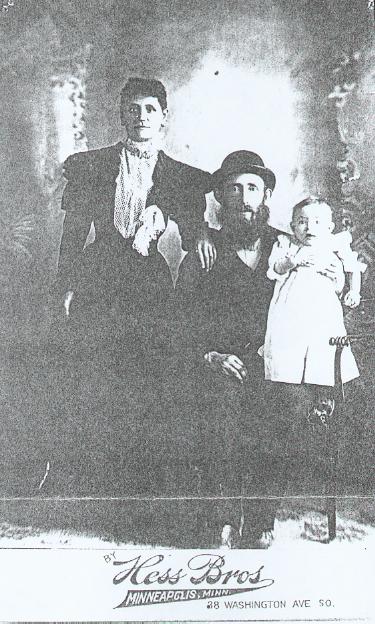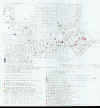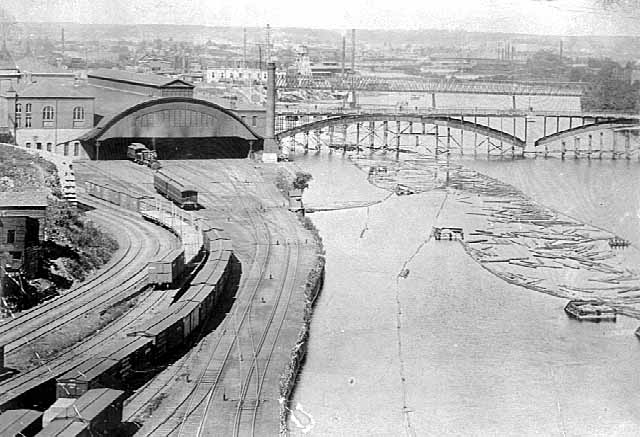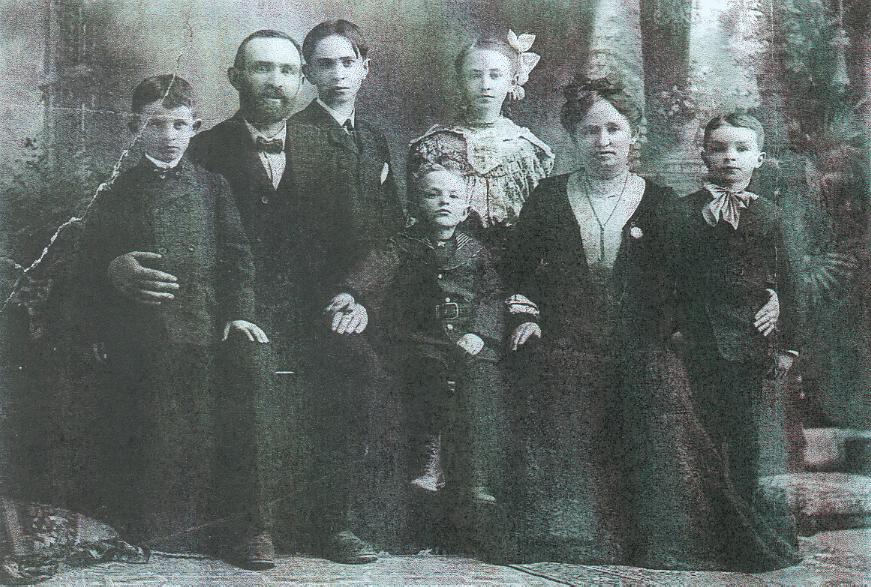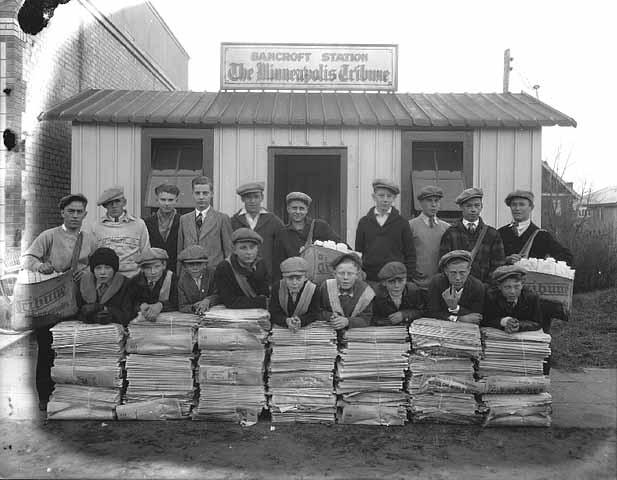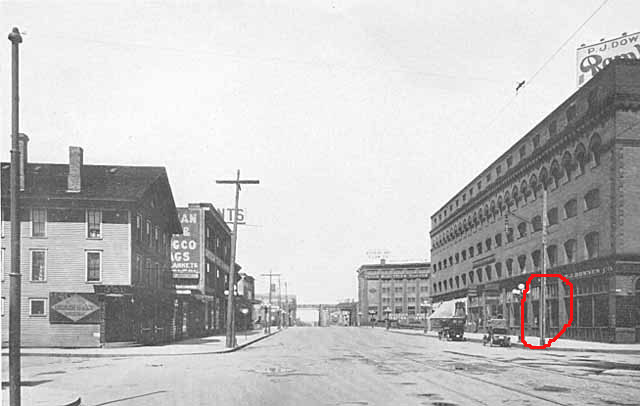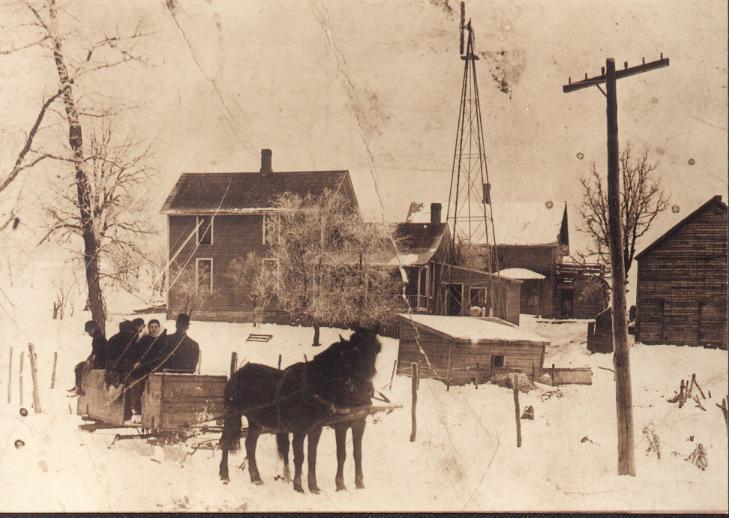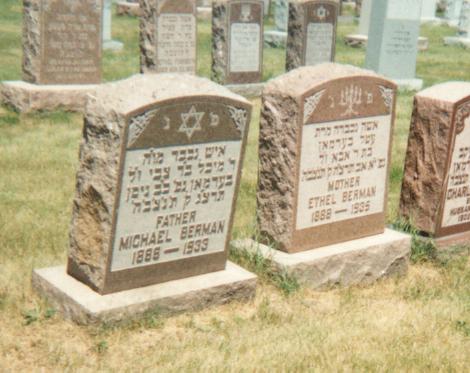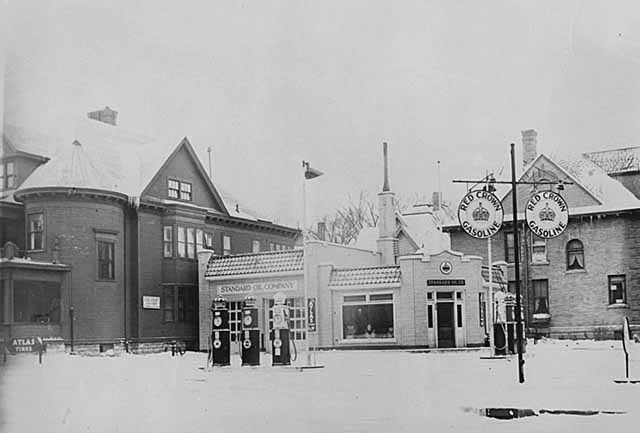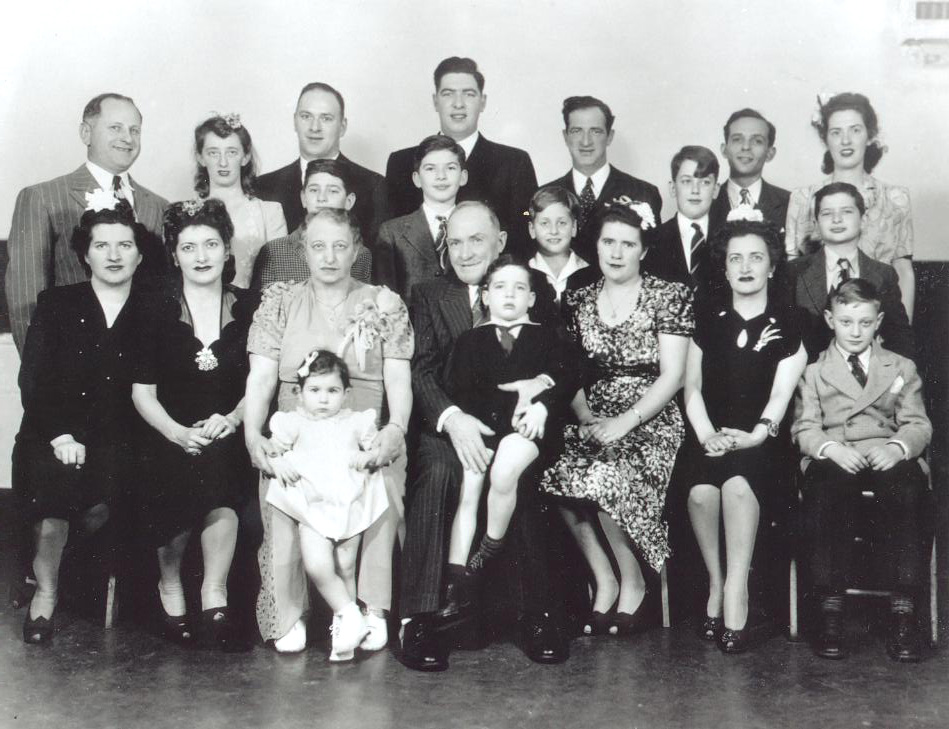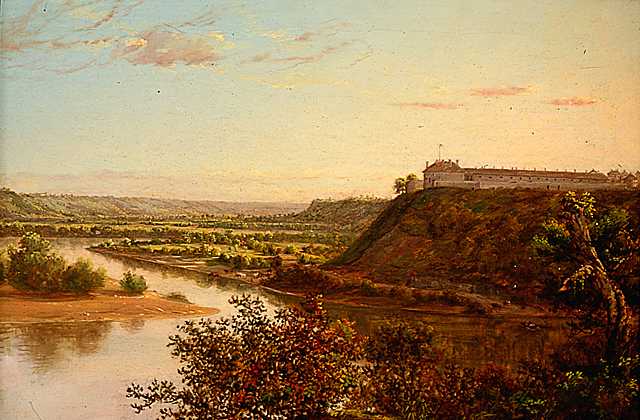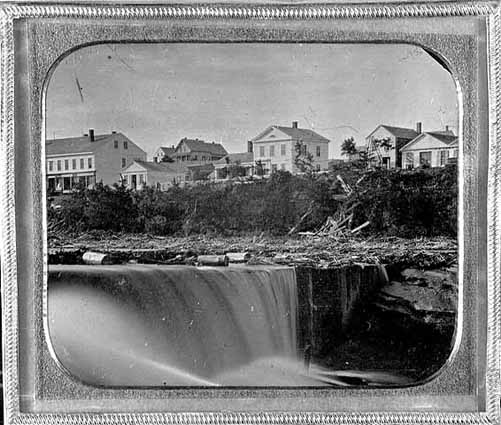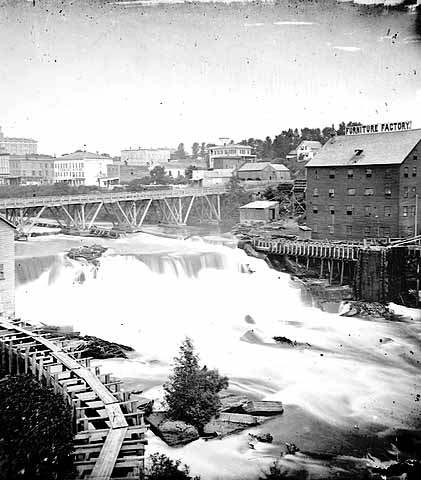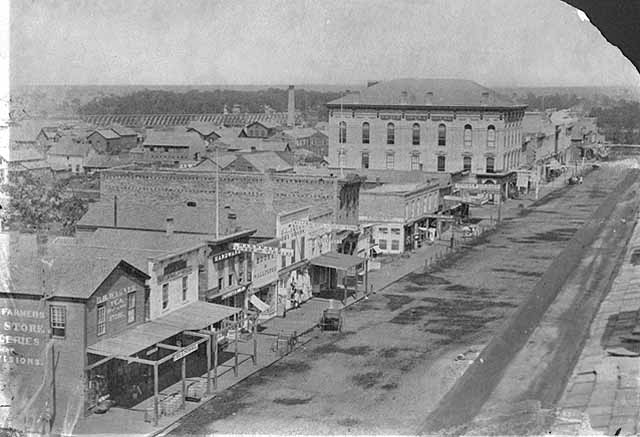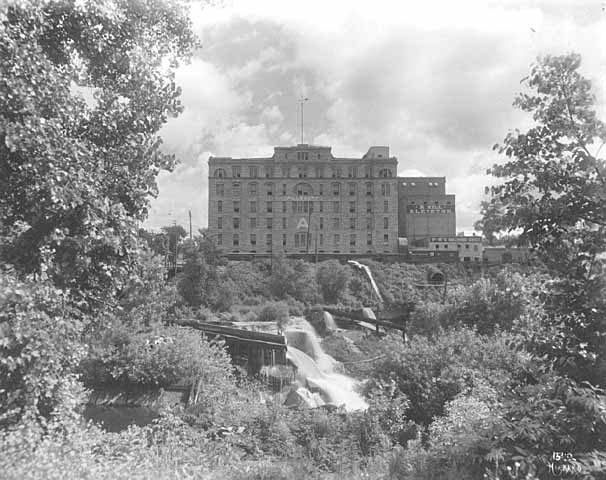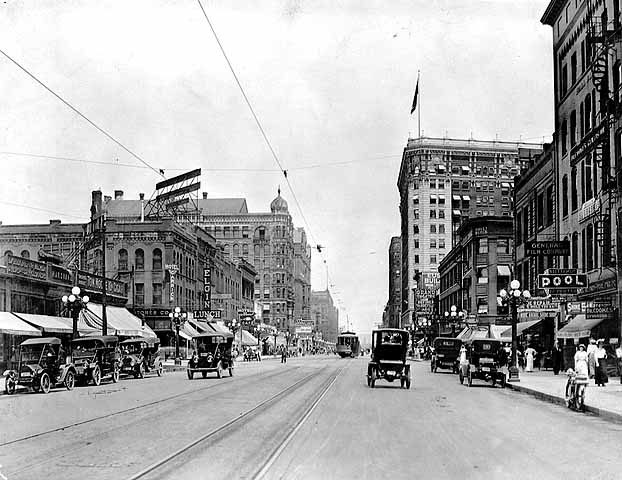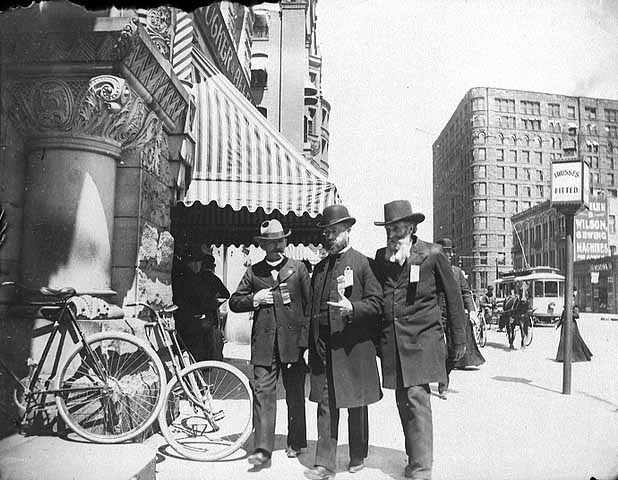|
|||
|
The second of Herschel and Bayla’s children, Jacob Dov Berman (1861-6 Oct 1912), married Chaya Fraida Grossman (Jan 1867-1949), Jacob Grossman’s niece, on the 17th of Elul, 1887. The wedding, the second Grossman-Berman union, probably took place in Kornitsa. Evidently, by this time an extraordinarily strong bond of unity and kinship had formed between the two families. Instead of settling down in Kornitsa, where the groom’s family was concentrated, the newlyweds packed up their belongings and fled to America with their newborn daughter. The pogroms were probably the main factor in their decision to emigrate. However, according to John Marcus, Jacob Dov had his big toe cut off so that he would not have to serve in the Russian army. It seems likely that he faced either a long military career far from his family or exile abroad.
Jacob Dov and Chaya Fraida Berman with son Norman in 1898
At this point we are ready to confront one of the most perplexing
questions regarding the Grossman family and their in-laws, the Biermans: How and
why did they end up settling in Minneapolis, Minnesota when they could have gone
to Miami Beach or Honolulu? We can be sure the couple arrived in Minneapolis sometime in 1888 because it says so on the Federal Census form that was filled out by the enumerator James E. Stewart on June 11, 1900. Their oldest daughter, Zeesle “Jessie” R., was born in Ukraine on August 1, 1888. Of course, this means that the couple emigrated shortly after her birth, probably in the same month, but no later than early October. It would have been imprudent of them to wait until autumn, when inclement weather could have made for an unpleasant or even risky voyage across the Atlantic Ocean. At the Minnesota Historical Society I found an 1887 picture of Union Station, taken only about a year before they arrived there.
Union Station, Minneapolis, 1887 I later found an old photograph that depicts the station as it was at the moment of their arrival in 1890.
Union Station Hennepin and High Street, 1890 On that hot, humid summer day when Jacob Dov and Chaya Fraida stepped off the train, they probably had no idea how cold the weather would be in a few months, otherwise they might have re-boarded and headed for Mexico! By 1890 Jacob Dov was working as a peddler and living with his wife and two children, Zeesle and Shifra (Sophie), at 1429 North 1st Street, only a block north of the station and right next to the tracks.
Minneapolis directory of 1890 listing Jacob Dov Berman The rumble of passing locomotives must have been a constant nuisance, as were the drifters and malefactors who frequented the area. Just a few blocks south of where they lived, in the area bounded by North 1st Street, North 5th Street, 3rd Avenue North and 10th Avenue North, in the old heart of downtown, other Jewish immigrants were pouring in from Germany, Romania and the Russian Empire. Scandinavians and Irish were arriving at the same time and renting their first flats in the same quarter. Although a solid community of German Jews had already formed in St. Paul in the preceding two decades, the new wave of East European arrivals, of which Jacob Dov and Chaya Fraida were part, threw in their lot with Minneapolis, which was enjoying an economic boom in the late-nineteenth century. Encouraged by the opportunities around him and the presence of a growing Jewish community, Jacob Dov wrote to his younger brothers Motel (Max) and Aria (Harry) Berman and his brother-in-law Moishe Grossman (1859-24 Nov 1938), urging them to abandon Kornitsa and Sudilkov for Minneapolis. He probably sent them a portion of his earnings to help pay for their voyage. Clearly, Jacob Dov had had only modest financial success in his first two years in the New World because Moishe did not have enough money to bring his wife and kids with him. It is safe to assume that in the decade before the turn of the century the Grossman and Berman families in Ukraine had formulated a general plan which called for sending the younger men to America, who would then earn enough money to bring over as many relatives as possible. The two families labored together to this end from the very beginning. Moishe, with Jacob Dov’s address in his pocket, bid farewell to his wife Temma and two young daughters, Grace (Nessie) and Harriet (Hattie), and joined Motel and Aria for the long journey across the ocean. They arrived in Minneapolis sometime in 1890. By 1891 Moishe Grossman lived in a small apartment or house with Motel, Jacob Dov and the latter’s family at 609 North 2nd Street, directly across the street from the railroad yards, in what must have been one of the busiest quarters of the city. We can assume that Aria, who must have been too young to be listed in the city directory, lived with them. Both Moishe and Jacob Dov were peddlers, almost certainly in business together, while “Marks” (Motel, Max,) worked as a laborer for Markus, Segal & Co. By mid 1892 Moishe was finally joined by Temma and his two daughters. I know this because Louis (Lou) Sydney Grossman was born on June 30, 1893, and therefore had to have been conceived in Minneapolis around late September of the preceding year, soon after Temma’s arrival. Strangely, on the 1900 Federal Census form the immigration date for Temma, Grace and Hattie was given as 1893, which is clearly impossible. By the end of 1893 Jacob Dov’s wife had given birth to two more children, Herschel “Harry” C. and Moshe “Morris” Isaac. In short, there were no less than thirteen Bermans and Grossmans living together in the same space, and possibly more (if Motel brought his family with him), including seven children ranging in age from a few months to twelve years old! By 1895, even more relatives arrived. My great-grandfather Max Grossman, the youngest of Moishe’s four children, was born there on March 10, 1895. Of all the Berman and Grossman immigrants Jacob Grossman, who arrived in 1892, seems to have been the only one not to settle in the flat on North 2nd Street. This was almost certainly because it was too crowded. Instead he worked and probably lived at a little place at 801 North Lyndale Avenue, on the northwest corner of 8th Avenue North. According to the 1900 Federal Census, he was joined by his wife Chaya Riva and five children in 1895. By then he was living at 517 North 2nd Street, only a block away from his nephew Moishe and all of his Berman in-laws. Obviously, he wanted to raise his children together with the extended family living down the street and attend the same synagogue with them. In the year 1896 Jacob Grossman’s oldest son Mechel “Michael” Grossman (1873-17 June 1954) was listed in the Minneapolis city directory as a peddler. Evidently, at 23 years old he was working the streets with his father selling merchandise of some kind. His four younger siblings were still too small to help out. In 1899, just after marrying, Mechel and his wife got their own place at 903 Washington Avenue North. Still a peddler in 1900, Mechel, who now called himself “Max”, moved with his wife and newborn daughter Marie “Mary” (born April 23, 1899) to 414 6th Avenue North. Motel Berman, born between 1866 and 1873, probably remained at 609 North 2nd Street until at least 1895. However, by 1899 he was living and working as a grocer at 600 Washington Avenue North, just around the block from his former residence. His grocery (I do not know whether he owned it) must have served much of the little neighborhood in the area west of the train station, especially the recent Jewish arrivals. In the Minneapolis city directories of 1905-1915 “Max” Berman—as he called himself—was listed as a grocer whose workplace and residence were both at 712 North 4th Street. At some point—I do not know whether it was in Europe or Minneapolis—he married a women named Sarah and eventually had five children: Harry, Joseph, Sophie, Saul (Solomon, Samuel) and Edward (Eddie) J.
Judging by their names they were most likely born in America, but I cannot be sure. Sarah worked as a clerk for the family grocery store. From 1910 to 1915 the oldest child Harry was the bookkeeper and then treasurer of the Commercial Electrotyping & Supply Co. His sister Sophie assisted him there in 1915, while Joseph and Samuel were employed by the Minneapolis Tribune. Minneapolis Tribune, paper boys at Bancroft Station, circa 1925 By 1925 Max was listed as the president and treasurer of the Berman Jobbing Company. He resided and worked at 1230 Knox Avenue North and was assisted there by Sophie (secretary) and his youngest boy Edward (clerk). Sophie apparently had a second job at a clothing store at 260 Hennepin Avenue. According to the 1895 Minnesota census, at 609 North 2nd Street a Rebecka Grossman, born in Germany in 1835, lived with Moishe, Jacob Dov, Max and the others. The identity of this woman is a total mystery, but her name and address are indisputable evidence that she and Moishe Grossman were somehow related. It is conceivable that she was his aunt, or even his mother Miriam, who for whatever reason may have been known as “Rebecka”. Most interesting is the fact that she was from Germany, just as the Biermans apparently were before they moved to Kornitsa. Therefore, there is a possibility that the Grossmans as well as the Biermans were German citizens before moving to Ukraine. Strangely, Rebecka exists only on that single census document, and I have otherwise failed to find any trace of her. At the time of the census she was 60 years old, and must have died soon after. But where is she buried? I have not been able to find her grave, and would have expected it to be located next to those of her relatives in the same Minneapolis cemetery. In 1895, according to the Minneapolis city directory, Mechel “Michael” Berman, another of Jacob Dov’s younger brothers, also lived at 609 North 2nd Street, after having recently immigrated from Kornitsa. In that year he worked at a clothing store at 302 Washington Avenue North, which I have identified in a 1912 photograph.
His grandson Harold Grossman remembers some wonderful details of Mechel’s early life. On July 21, 1996 he told me the following: “I know that my grandfather Berman, my mother’s father, came from Slobodke Gubernia [?] in Russia, that he grew up on a farm in Russia, and that his father, aside from...living on the farm, had some other activity that I think, or as I remembered, had something to do with traveling to a neighboring state or government. Living on the farm, he had some sort of state job. I never did understand what it was, but they all did live on a farm. Grandfather rode the fences summer and winter, and in the winter he slept with his horse... They had two little huts. It took him three days to get around the property. He slept in the hut with his horse to keep warm and keep the wolves away from his horse. He was a big man.” Norman Grossman, Harold’s older brother, remembers that Mechel said that “when there was a pogrom or there was any pressure on the Jews on the Russian side of the river, they would cross over temporarily into what might have been Austria. And sometimes to get a better education the children would be sent to the Austrian side where there was less pressure against the Jewish people. There they were more or less tolerated.” According to Muriel Fischer, another of Mechel’s grandchildren, Mechel arrived in the United States via Galveston, Texas (see “Exodus” chapter), like many Ukrainian Jews. He then went to Canada and subsequently reentered the United States from the north. She is contradicted by Harold, who affirms, “It’s my impression that he landed in Boston because he referred to the rock where he landed—he couldn’t remember the name of the town—I assume it was Plymouth Rock. He worked his way across the country to Minnesota, and somehow acquired a farm, where he was a dairy farmer in... Columbia Heights. And when his kids were of school age he wanted to get off the farm so... he moved to town and bought a house, sold the farm... raised his kids, and part-time raised some of his grandchildren.” Muriel adds that Mechel and his wife Ethel, whose maiden name was Gorenstein, owned property on 6th Ave. North and on North 4th Street. They lived on a farm northeast of Minneapolis at 929th (?) and Benjamin Street, which is still standing, although remodeled.
Mechel and Ethel Berman on farm in New Brighton Minnesota, circa 1900 That Mechel and his family lived on such a farm is confirmed by the 1905 and 1910 Minneapolis directories, the latter of which includes “Michael Berman, dairy r [residence] 2907 Benjamin”. In the 1915 directory, I found “Michael” living at 902 11th Avenue North and working at a second hand store on 12 South 1st Street. The couple is buried at the Jewish cemetary on 70th and Penn Ave South.
Mechel and Ethel Berman tombs Mechel and Ethel had eight children, the last of whom was adopted. In order, these were Sophie, Jean (Jennie), Edith, Morris (Maurice), Abraham (Abe), Charles (Chas) E., Belle and Albert L. Sophie was born on December 30, 1893. She married Louis Maltzman in 1910 and moved with him to Chicago, where he passed away in 1934. She married a second time in 1950 to a man named Milton Berg, the immigrant son of Leah Grossman! Both Milton and Sophie died in Chicago in 1963. Jennie was born on July 23, 1894. She married Louis Grossman, the elder of Morris’s two sons, in Minneapolis on Aug 17, 1913, but they divorced in 1925. Years later she remarried a Cohen. Jennie died on August 7, 1991 at the age of 97. The third child, Edith, worked as a clerk for H. I. Weinberg in 1915. She eventually married a Haskvitz. Morris lived at home in 1925, but ultimately married Estelle Waiss and moved out. I have learned nothing definite about Abe Berman except that he married Edith Shapiro. In 1925, Charles E. Berman lived at home and worked as a salesman for Grossman-Kimball Company, the future Grossman Chevrolet. Of course, his older sister Jean was married to Louis Grossman, the co-owner. In the Social Security Death Index I found a “Charles Berman, 12 May 1908-Sep 1978” who lived in Pacific Palisades, CA, but carried a Minnesota social security number. This may or may not have been the same man. Charles was married to Gladys Lifson. The seventh child, Belle, married Herman Goldman. Another child, Albert, seems to have been adopted, but I cannot say for sure. According to Joy Marcus he was the nephew of his adoptive mother Ethel. He came alone from Russia and took on the Berman name. Daniel Bierman told me that Albert was put into kindergarten at 12 years old because he arrived in the United States illiterate, but he was booted out for smoking cigarettes! He eventually entered the fuel and gasoline business and became the largest distributor for Standard Oil in Minnesota. I found him in the 1925 Minneapolis directory listed as the president of Crescent Oil Company, living at 2023 Penn Avenue North.
Standard Oil Station, Franklin and 3rd Avenue South, circa 1930 Unfortunately, Albert took to the bottle and lost everything, but subsequently straightened out his life and rebuilt his fortune in the form of Firestone Oil Company. He was married to a woman named Bess. In the Social Security Death Index I found an Albert Berman (25 Dec 1888-May 1973) with social security number 468-05-0667; as in the case of Charles, this may or may not be him. Harold and Norman Grossman, Lou’s sons, confirmed Joy Marcus’s information. They remember Albert as a wonderful man, a very kind gentleman. Herschel and Bayla’s next child after Chaya Riva, Jacob Dov, Mechel and Motel, was Aria “Harry” Berman. He was born in the Old Country in 1873 and died in Minneapolis in 1946. According to the 1920 Federal Census, Harry immigrated to the United States in 1890, probably accompanied by his older brother Motel and his uncle Moishe Grossman. Because his future wife Anna “Annie” (1877/1878-1956) was only 13 or 14 at the time of his arrival in Minneapolis, he must have met her there. She seems to have immigrated in 1894 (the year is not clearly legible on the census form). The same form reveals that Harry and family owned a home at 1219 North 6th Street and lived there with a three-member Jewish family. Harry worked as a merchant at some kind of store (not clearly legible). His first cousin Sophie, who married Sam Marcus and had three children—Joy, David and John—lived only a block away at 1327 North 6th Street. The six children of Harry and Annie were: Beatrice (31 Oct 1899-Jan 1989), Leo (24 Nov 1904-Jan 1968), Clara (b. 1906), Raymond (b. 1913), Dorothy (b. 1915 or 1916) and Sidney (b. 1918 or 1919). In a photograph from about 1945 Harry and Annie pose with their extended family, including Lou Grossman (above left) and his wife Beatrice (below, second from right).
Aria and Anna Berman and family, circa 1945 The sixth and final child of Herschel and Bayla was Shaina (b. in or after 1874, date of death unknown). It is possible that she came to America as a teen with her older brothers Jacob Dov, Motel and Aria and her uncle Moishe Grossman, but I have no evidence either way. All I know is that she married Motel Buchwald and had four children: Ruth, Harry, Jack and Belle. In addition to providing me with the addresses and occupations of dozens of Grossmans and Bermans, the Minneapolis city directories yielded some interesting statistics. In the 1889 directory there are no Grossmans or Bermans listed. Of course, this does not necessarily mean that there were none living in the city, for we know that Jacob Dov Berman had arrived by 1888, even though he was not listed until 1890. However, it does give us an approximate idea of when Grossmans and Bermans first settled there. Normally, an adult man listed himself within one or two years of arriving in Minneapolis, even if he worked as a simple peddler. Jacob Dov Berman was among the very first Bermans to live in the city. Only two Grossmans, evidently unrelated to us, were living in Minneapolis before Moishe Grossman. They were Alfred and Pinke Grossman, co-owners of a scrap metal business. They first appeared in the 1890 directory. Moishe, the third Grossman on the scene, listed himself beginning with the 1891 directory. Thus, in 1891 there were three Grossmans in the Minneapolis city directory (Alfred, Pinke, and Moishe) and four Bermans (Bernhard, Isaac, Sophia, and Jacob Dov). I do not believe that Jacob Dov and the other three were related. Only five years later there were still only three Grossmans listed—Alfred, Charles (also not related), and Moishe—but there were already 17 Bermans. In 1905 there were 12 Grossmans and 20 Bermans, and in 1925 the number increased to 48 and 64 respectively. Today, Minneapolis Grossmans and Bermans number in the hundreds. As I stated above, two years after the arrival in Minneapolis of Jacob Dov Berman and his wife Chaya Riva, Bermans and Grossmans, newly arrived from the Russian Empire, started to converge on the small flat at 609 North 2nd Street. Upon arrival the men immediately set about looking for work, anything they could find. At that time Minneapolis was enjoying an explosive surge in industrial activity that was lifting the economy to new heights. The town had come a long way since the first European, Father Louis Hennepin, discovered and named Saint Anthony Falls in 1680. To summarize, in the early-nineteenth century soldiers from nearby Fort Snelling built a sawmill and flour mill next to the falls.
Fort Snelling, anonymous painter, circa 1855
Fort Snelling, photo circa 1860 By the 1840’s the village of Saint Anthony was permanently established on the east bank of the Mississippi and the village of Minneapolis on the west bank. The two settlements were soon linked by a single suspension bridge. In 1849, the year Minnesota became a territory, Franklin Steele constructed the first commercial mill in Saint Anthony.
St. Anthony Falls and stores along Main Street, daguerreotype 1852
St. Anthony Falls, circa 1865 Six years later the inhabitants successfully lobbied the legislature to incorporate Saint Anthony as a city. With nearby Saint Paul as its only rival, Saint Anthony seemed destined to become the major metropolis of the region. But when Franklin Steele and his associates fell on financial hard times, the city’s milling industry and population began to be surpassed by those of Minneapolis, the boom town across the river that had been granted a charter in 1867.
Mineapolis in 1857: site where courthouse would later be built
Hennepin Avenue between Washington Avenue and 2nd Street, photo 1867 In 1872, Minneapolis—the “Mill City”, as it came to be called—and Saint Anthony were merged into a single city, and the latter lost its municipal status and separate identity forever. With the massive power-generating potential of Saint Anthony Falls, Minneapolis, the name of which derives from the native American word for water (minne) and the Greek word for city (polis), soon became the main processing center for Minnesota grain.
1890 photo of the Pillsbury ‘A’ Mill The large mills established along the river eventually gave rise to the industrial giants General Mills, Pillsbury and Cargill, still headquartered in Minneapolis.
Hennepin Avenue from 7th Street looking north, 1912
Nicollet Avenue from 9th Street circa 1915
Men in front of the Lumber Exchange, 1900 Given the positive economic climate of the 1890’s, the Grossmans and Bermans probably had no trouble finding work shortly after they arrived. With the bustling traffic in the city center and constant influx of newcomers pouring out of the nearby train station one could even make a living peddling wares on the streets. “Peddler” was usually the first occupation of Jews arriving in Minneapolis at that time. The more ambitious Grossmans and Bermans made learning English their top priority. Once they could communicate in the new language without too much difficulty, and afford a new suit and a couple of dress shirts, a whole range of opportunities became available. By 1895 Motel Berman was no longer working as a peddler, but was employed by an established business in the service sector. By that same year Jacob Dov Berman had founded his own business on Washington Avenue North. Jacob and Moishe Grossman, on the other hand, were more interested in traditional Jewish study than making money, and remained peddlers until 1899 and 1910 respectively. As the Bermans and Grossmans became increasingly successful, they left the old run-down flats at 517 and 609 North 2nd Street that had united them in the New World. As soon as they had the means they moved into their own houses and apartments around the neighborhood, however they always remained within walking distance of each other and the synagogue. By 1899 they had all left North 2nd Street. With much effort I created a map depicting downtown Minneapolis in the fifty-year period following the arrival of Jacob Dov Berman in 1888. I have located the precise addresses of most of the early Bermans and Grossmans and have traced some of their migrations around the city. |
